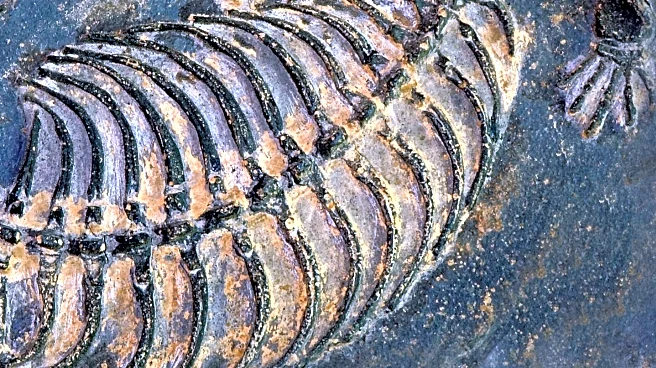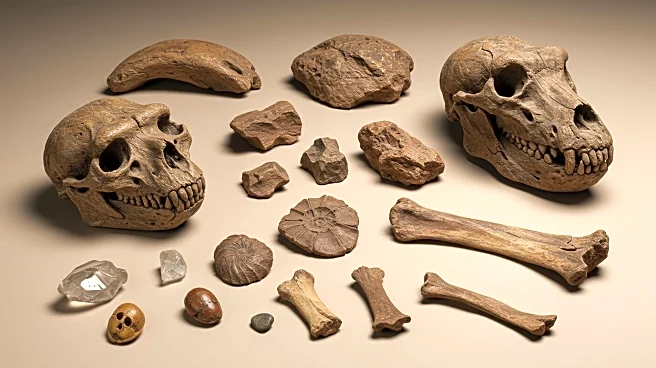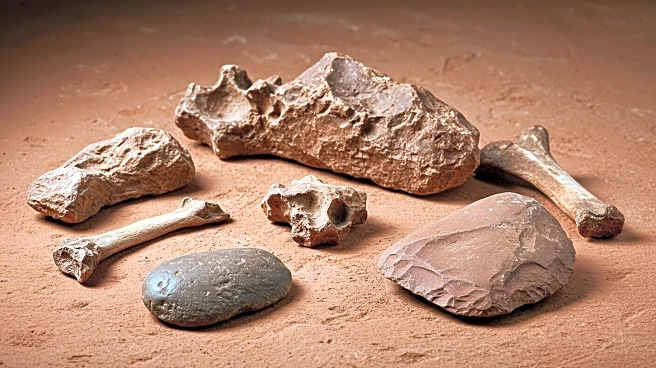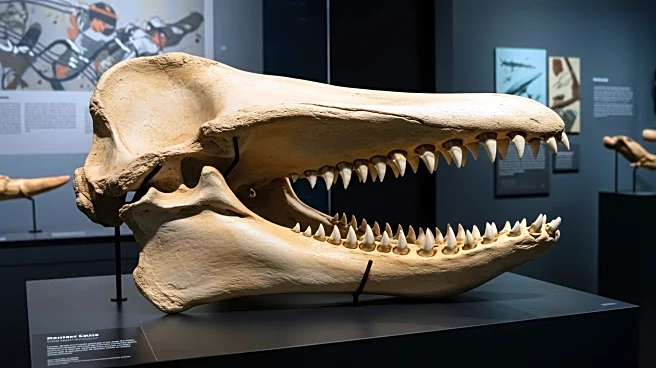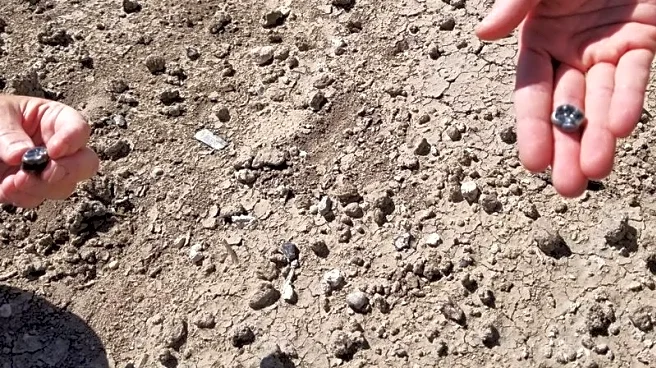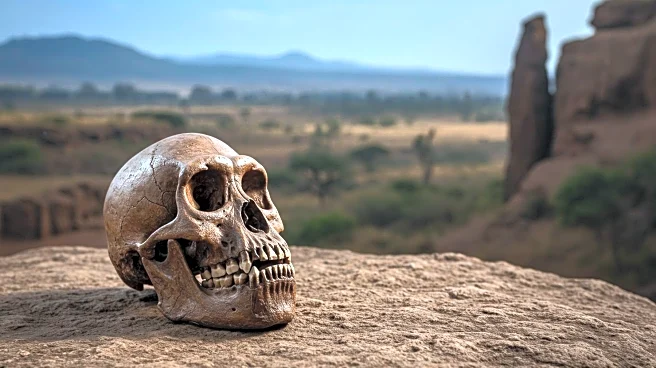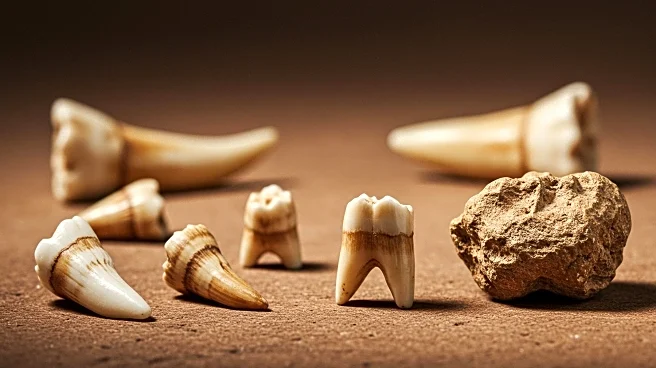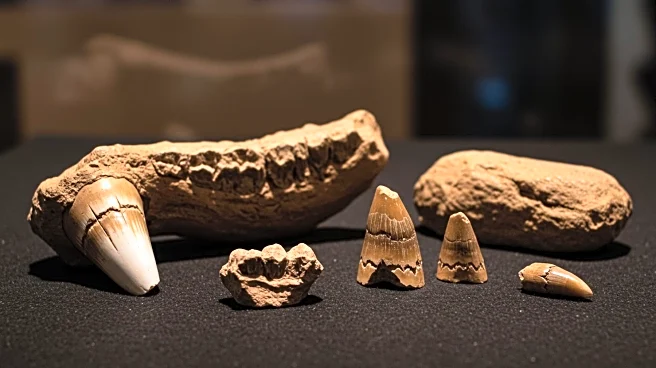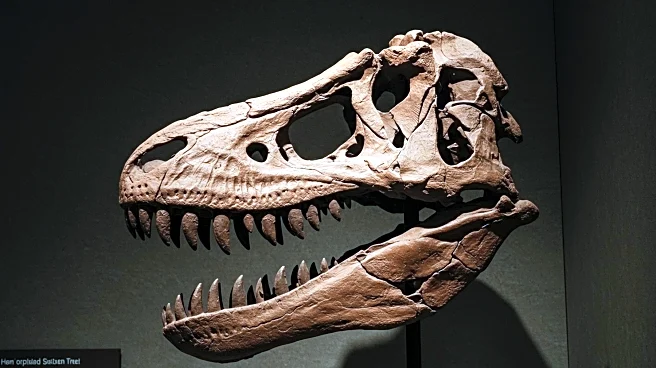What's Happening?
A team of archaeologists has discovered fossils in Ethiopia that belong to a previously unknown species within the Australopithecus genus. These fossils, consisting of teeth from two individuals, date back 2.6 to 2.8 million years and suggest the existence of a new species that coexisted with early Homo species. The findings, published in Nature, indicate that multiple human-like lineages may have lived in East Africa simultaneously, challenging the linear view of human evolution. The researchers are examining the enamel of the teeth to understand the dietary habits of these species, which may have allowed them to coexist without competing for resources.
Why It's Important?
This discovery provides significant insights into the complexity of human evolution, suggesting a 'bushy tree' model rather than a linear progression. Understanding the diversity of early hominin species can shed light on the adaptive strategies that led to the survival and evolution of modern humans. The coexistence of multiple species in the same region highlights the dynamic interactions and environmental pressures that shaped evolutionary paths. These findings contribute to the broader understanding of human ancestry and the factors that influenced the development of traits seen in contemporary humans.
What's Next?
Further research is needed to confirm the classification of the newly discovered species and to explore its ecological niche. The team plans to continue excavations in the Ledi-Geraru area to uncover more fossils that could provide additional information about the species' characteristics and interactions with other hominins. As scientists analyze the enamel of the teeth, they aim to reconstruct the dietary habits and environmental conditions that supported the coexistence of diverse hominin species. These efforts will enhance the understanding of human evolution and the factors that contributed to the survival of certain lineages.
